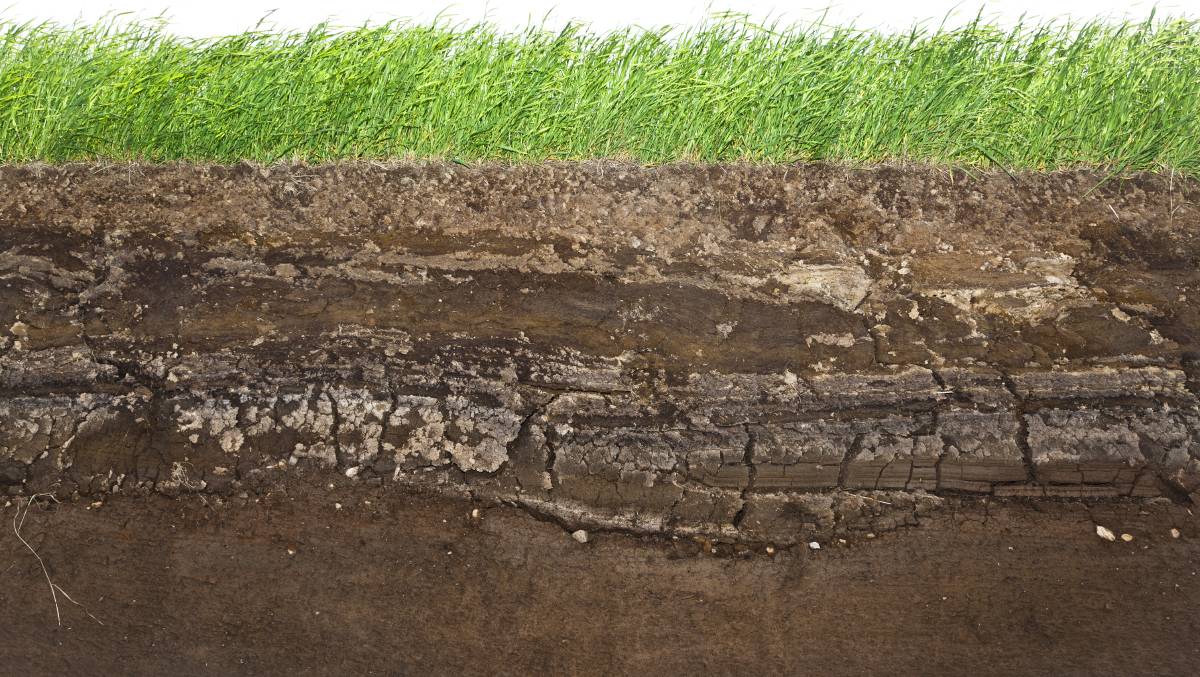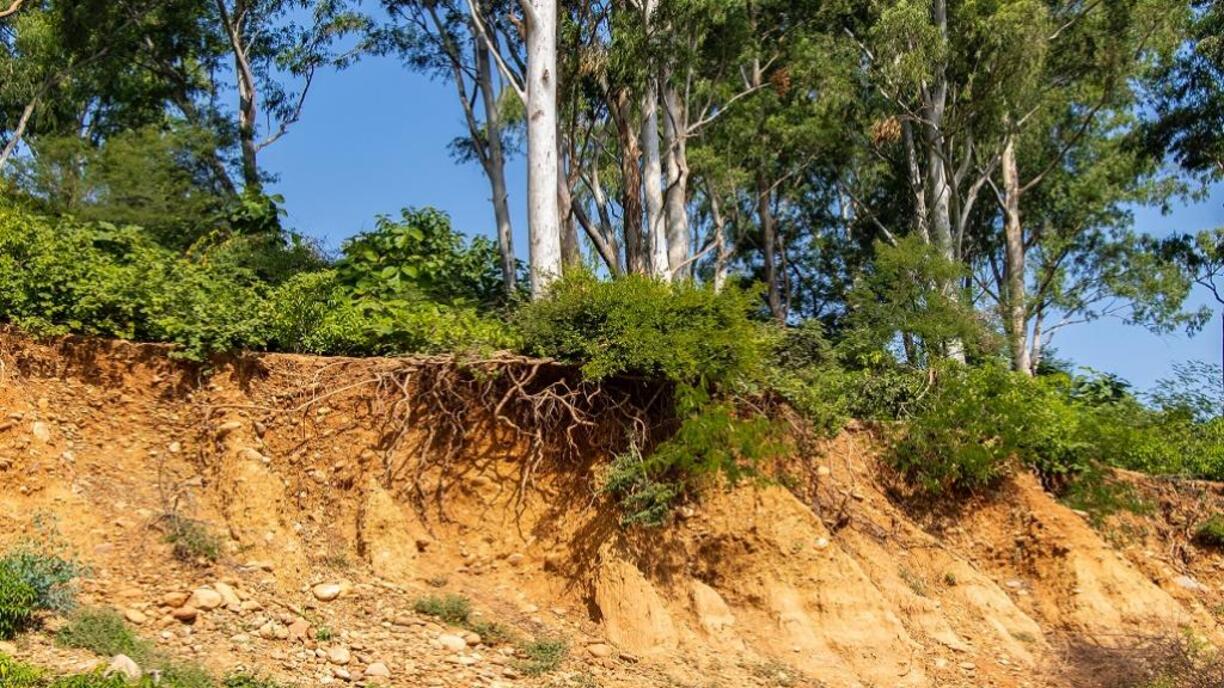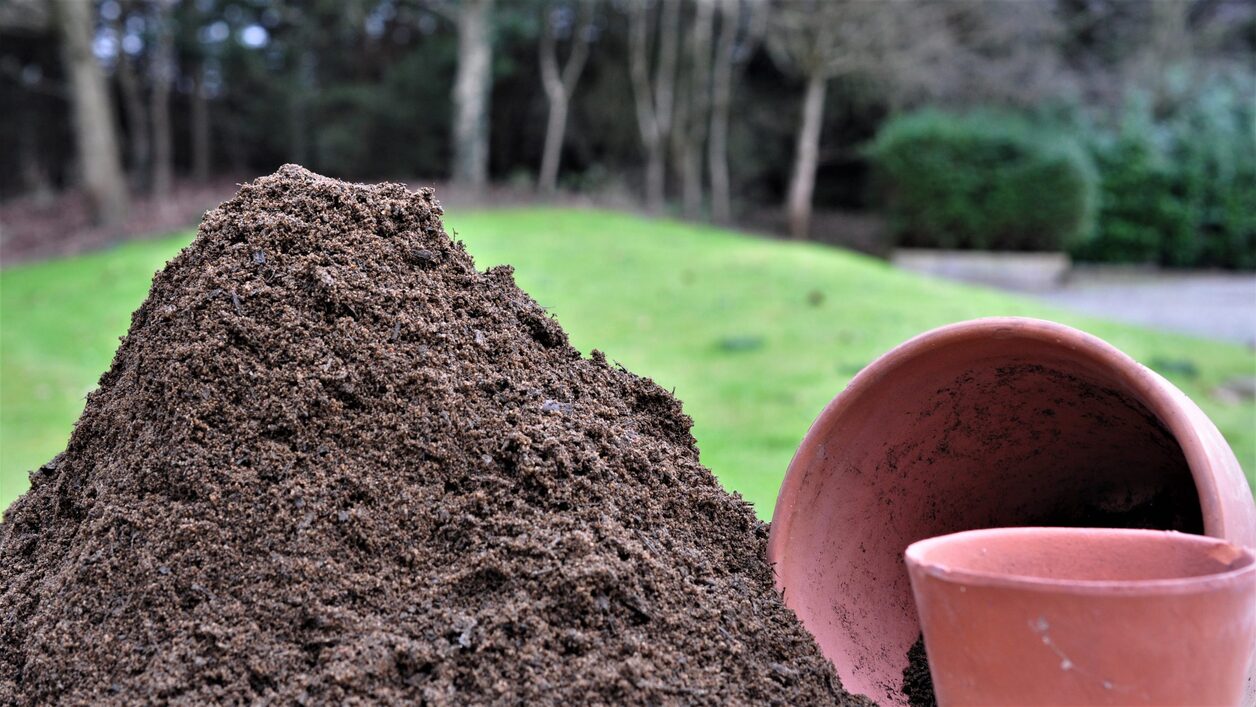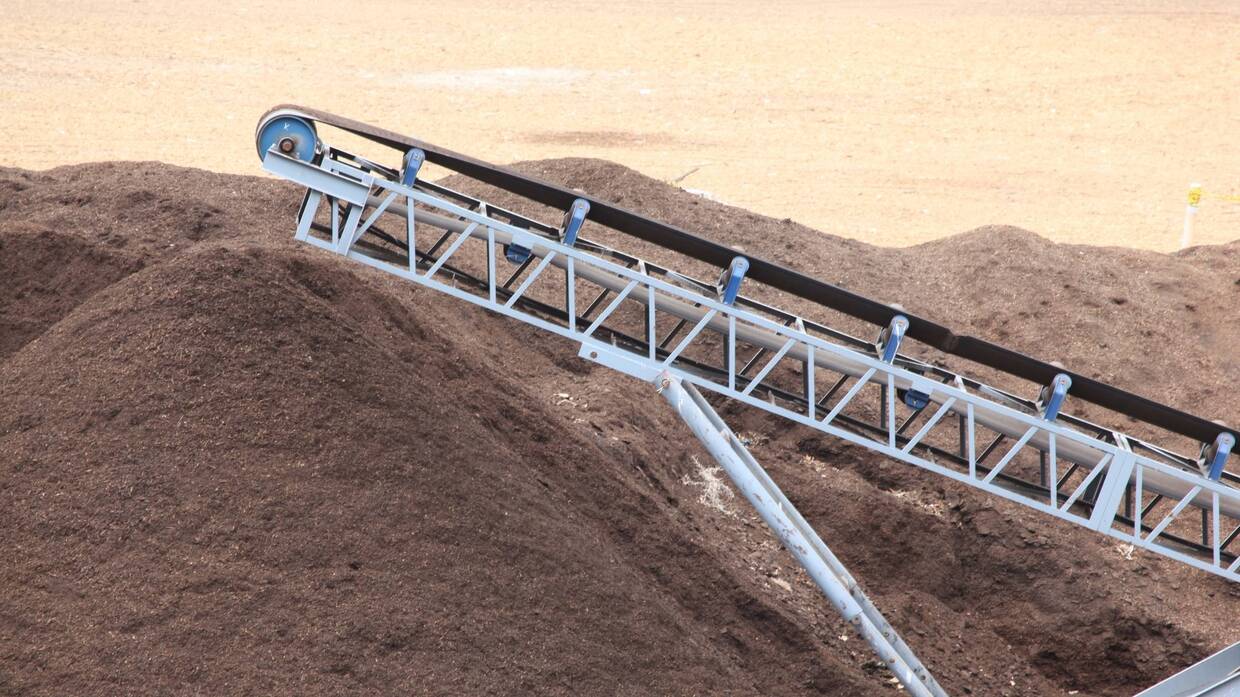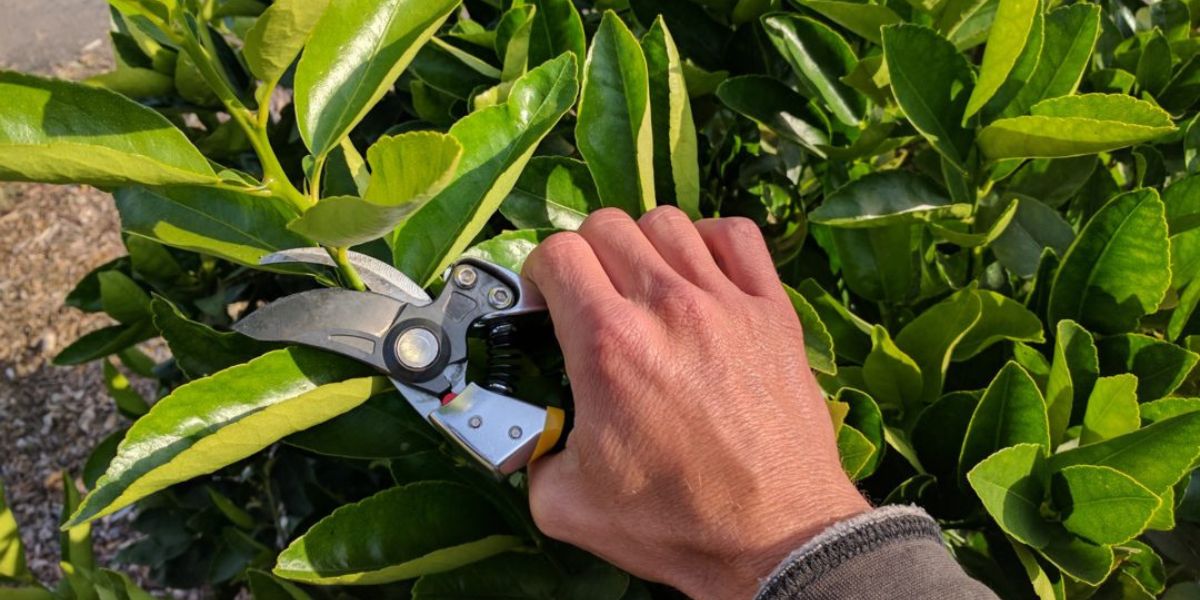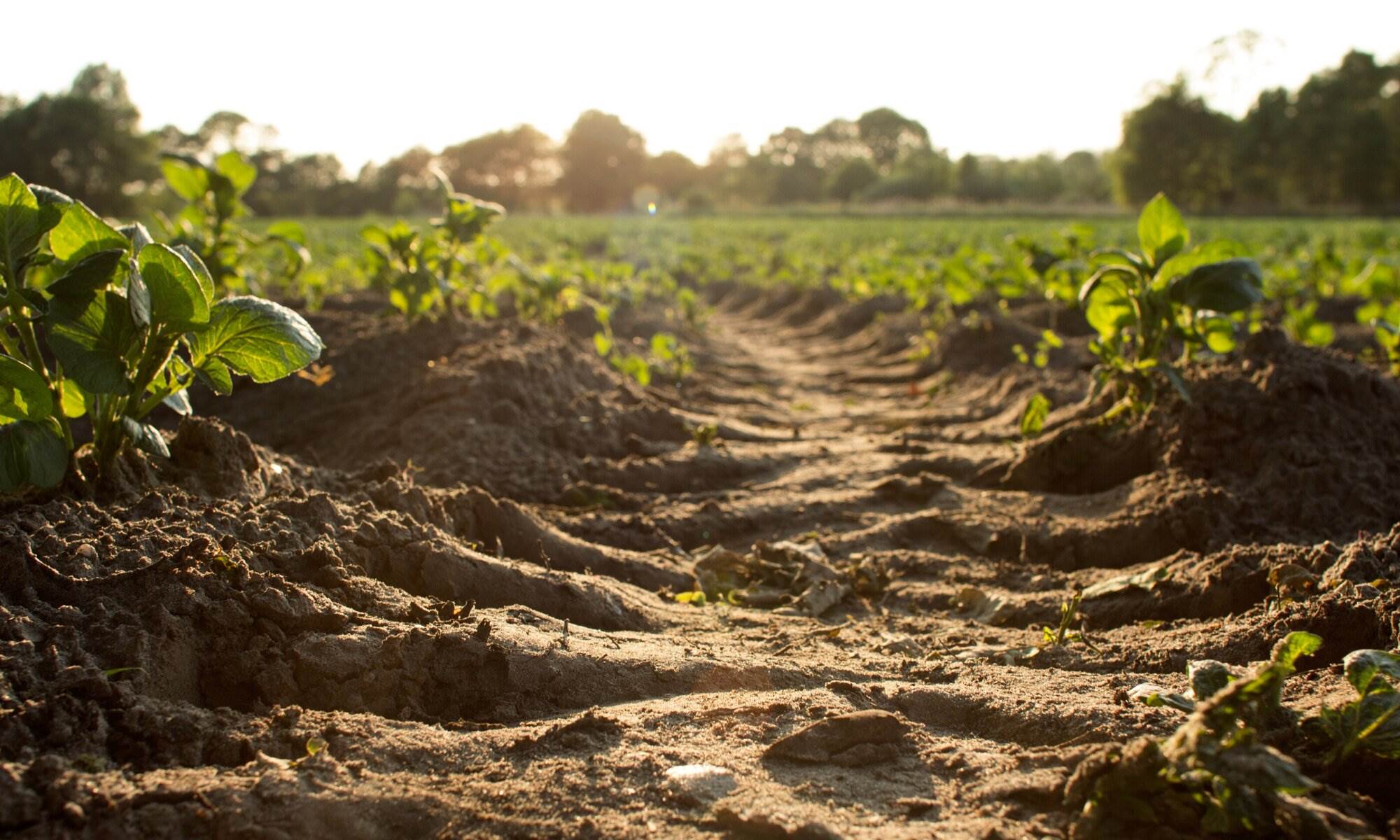Home>Gardening Basics>Understanding Soil>Explain What Contributes To Topsoil Formation And How Topsoil Is Important To Plant Growth.


Understanding Soil
Explain What Contributes To Topsoil Formation And How Topsoil Is Important To Plant Growth.
Modified: February 6, 2024
Learn how understanding soil contributes to topsoil formation and why it is crucial for plant growth. Explore the importance of topsoil for healthy plant development.
(Many of the links in this article redirect to a specific reviewed product. Your purchase of these products through affiliate links helps to generate commission for Chicagolandgardening.com, at no extra cost. Learn more)
Table of Contents
Introduction
Soil is a vital component of the earth’s ecosystem, playing a crucial role in supporting plant growth and sustaining life. Within the intricate layers of soil, topsoil holds a special significance. Topsoil is the uppermost layer of soil, typically ranging from 2 to 8 inches in depth, and is rich in organic matter, nutrients, and microbial life. It is the zone where plant roots anchor themselves and draw essential nutrients for their growth and development.
Topsoil formation is a complex process influenced by various natural factors, including weathering of rocks and minerals, biological activity, organic matter decay, microorganisms, and the continuous cycle of soil erosion and sedimentation. Understanding these factors is key to appreciating the value and importance of topsoil in promoting plant growth and sustaining agricultural practices.
In this article, we will delve into the factors contributing to topsoil formation and explore why topsoil is essential for supporting plant growth. By gaining a deeper understanding of these concepts, we can better comprehend the delicate balance within the soil ecosystem and the role that topsoils play in maintaining a healthy and productive environment for plants.
Definition of Topsoil
Topsoil is the uppermost layer of soil, typically found on the Earth’s surface and extending to a depth of about 2 to 8 inches. It is characterized by its dark color, crumbly texture, and high organic matter content. Topsoil is formed through the gradual accumulation and decomposition of organic materials, such as dead plant and animal matter, over a long period of time.
One of the defining features of topsoil is its high fertility. It contains a wealth of essential nutrients, including nitrogen, phosphorus, and potassium, which are vital for plant growth. Topsoil serves as a reservoir for these nutrients, allowing plant roots to easily acquire them for their metabolic processes.
Furthermore, topsoil is teeming with microbial life, including bacteria, fungi, and other microorganisms. These microorganisms contribute to the decomposition of organic matter, releasing even more nutrients into the soil. They also assist in breaking down complex organic compounds, making them available for plant uptake.
Topsoil plays a crucial role in sustaining agriculture and plant growth. Its unique composition and fertility make it an ideal medium for root development and nutrient absorption. When tilled or cultivated, topsoil provides a hospitable environment for seeds to germinate and plants to flourish.
It is important to note that topsoil can vary in composition and characteristics depending on the geographical location and environmental conditions. Different regions may have different types of topsoil, such as sandy, loamy, or clayey topsoils. Each type has its own set of properties and affects plant growth differently.
Overall, topsoil is a precious resource that needs to be conserved and protected. Its fertility and ability to support plant growth make it indispensable for sustainable agriculture and ensuring food security for future generations.
Factors Contributing to Topsoil Formation
Topsoil formation is a complex process that involves the interaction of various natural factors. Understanding these factors is crucial in maintaining and preserving the integrity and fertility of topsoil. Let’s explore the key contributors to topsoil formation:
- Weathering of Rocks and Minerals: Over time, the continuous process of weathering breaks down rocks and minerals into smaller particles. This process can be physical (through the action of wind, water, and temperature changes) or chemical (involving reactions with water, oxygen, and acids). Weathering creates the primary materials that eventually form the basis of topsoil.
- Biological Activity: Within the soil, numerous organisms contribute to topsoil formation. Earthworms, insects, small mammals, and plant roots help break down organic matter and mix it with mineral particles. These activities enhance soil structure, allowing for better water and nutrient penetration.
- Organic Matter Decay: The decomposition of organic matter, such as leaves, roots, and dead organisms, is a significant contributor to topsoil formation. As organic matter decays, it releases essential nutrients and compounds that enrich the soil, promoting the growth of microorganisms and supporting plant nutrition.
- Microorganisms: Bacteria, fungi, protozoa, and other microorganisms are vital components of topsoil formation. They participate in organic matter decomposition, releasing nutrients from dead organic material and converting them into forms that plants can easily absorb. Additionally, certain microorganisms form symbiotic relationships with plant roots, aiding in nutrient uptake.
- Soil Erosion and Sedimentation: The movement of water, wind, or ice can cause soil erosion, carrying away the topsoil and depositing it in other areas. Erosion can be detrimental, as it removes the fertile topsoil layer. However, sedimentation, where eroded particles settle in new locations, can also contribute to topsoil formation over time.
All these factors interact and work together over an extended period, gradually building up the topsoil layer. The composition and fertility of topsoil are directly influenced by the balance and intensity of these contributing factors. Understanding and managing these factors are essential for maintaining healthy topsoil and ensuring sustainable agricultural practices.
Weathering of Rocks and Minerals
One of the key factors contributing to topsoil formation is the process of weathering. Weathering refers to the physical and chemical breakdown of rocks and minerals into smaller particles over time. This gradual process plays a fundamental role in the formation of topsoil and the creation of a fertile soil profile.
Weathering occurs through two main processes: physical weathering and chemical weathering. Physical weathering is caused by factors such as temperature changes, water, wind, ice, and abrasion. These factors break down rocks into smaller fragments, creating a diverse range of particle sizes in the soil. On the other hand, chemical weathering involves the interaction of rocks and minerals with water, oxygen, acids, and other chemical compounds. This process causes changes in the chemical composition of the rocks, leading to the release of minerals and nutrients.
Physical weathering is responsible for the mechanical breakdown of rocks. When water seeps into cracks in rocks, it can freeze and expand, exerting pressure that causes the rocks to break apart. Wind erosion can also contribute to physical weathering by carrying small particles that scrape against other rocks, wearing them down over time.
Chemical weathering, on the other hand, involves chemical reactions that alter the composition of rocks and minerals. Water plays a vital role in chemical weathering as it can dissolve certain minerals or react with them, causing them to break down. Oxidation, a process where minerals react with oxygen, can also occur. This chemical reaction is responsible for the rusting of iron-rich minerals, turning them into a reddish-brown color.
The weathering process produces smaller particles known as sediments, which contribute to the formation of topsoil. These sediments can vary in size, from larger gravel and sand particles to smaller silt and clay particles. The diverse range of particle sizes in the soil profile affects its texture, porosity, and water-holding capacity.
Overall, the weathering of rocks and minerals is a critical process in topsoil formation. It creates the base materials necessary for the development of fertile soil and the availability of essential nutrients for plant growth. By understanding the processes involved in weathering, soil scientists and farmers can manage soil conditions to optimize topsoil formation and promote healthy plant growth.
Biological Activity
Biological activity is a significant factor contributing to the formation of topsoil. Within the soil ecosystem, various organisms play crucial roles in breaking down organic matter, mixing the soil, and cycling nutrients. This biological activity enhances soil structure, fertility, and overall plant productivity.
Earthworms are one of the most well-known soil-dwelling organisms that contribute to topsoil formation. As they burrow through the soil, earthworms create tunnels that improve soil aeration, moisture infiltration, and drainage. Their feeding habits also incorporate organic matter into the soil, facilitating its decomposition and nutrient release.
In addition to earthworms, other soil-dwelling organisms, such as insects, small mammals, and plant roots, contribute to the biological activity within the topsoil. Insects like ants and beetles help break down organic matter and mix it with the mineral particles, aiding in soil structure development. Small mammals, such as moles and rodents, dig tunnels and create pockets of loose soil, promoting aeration and water movement. Plant roots, through their growth and decay processes, add organic matter to the soil, improving its nutrient content.
The organic matter incorporated into the soil by biological activity serves as a vital source of nutrients and energy for microorganisms. These microorganisms, including bacteria and fungi, contribute significantly to topsoil formation. They decompose organic matter, releasing nitrogen, phosphorus, and other essential nutrients in plant-available forms. Additionally, they break down complex organic compounds, making them more accessible for plant roots to absorb.
Biological activity also helps in the formation of soil aggregates. Soil aggregates are clusters of mineral particles bound together by organic matter, microbial by-products, and fungal hyphae. These aggregates provide pore spaces for water infiltration and root penetration, improving soil structure and supporting plant growth.
The presence of diverse soil organisms and their interactions within the topsoil contribute to the overall health and fertility of the soil. Their activities enhance nutrient cycling, organic matter decomposition, and soil structure development. Robust biological activity helps create an environment conducive to plant growth, and it is therefore crucial to maintain and promote biodiversity within the soil ecosystem.
Understanding the role of biological activity in topsoil formation allows farmers and land managers to make informed decisions about soil management practices. By encouraging and supporting soil organisms, agriculture can be made more sustainable, ensuring the long-term health and productivity of topsoil.
Organic Matter Decay
Organic matter decay is a critical process in topsoil formation. It involves the decomposition of organic materials, such as leaves, plant residues, and animal waste, by microorganisms. This decay process releases essential nutrients and compounds, contributing to the fertility and nutrient availability of the topsoil.
When organic materials are added to the soil, microorganisms break them down into simpler forms through a process called decomposition. During decomposition, microorganisms secrete enzymes that break down complex organic compounds, such as cellulose and lignin, that are found in plant material. This breakdown releases organic acids and other by-products that help in further decomposition.
The decomposition of organic matter releases a wide range of nutrients, including nitrogen, phosphorus, potassium, and trace elements. These nutrients are in a form that plants can easily take up and utilize for their growth and development. As the organic matter decomposes, these nutrients are released into the soil, enriching the topsoil with vital elements.
Organic matter decay also contributes to improving the soil structure. The decomposition process creates humus, a stable, partially decomposed organic material that is rich in carbon compounds. Humus acts as a binding agent, holding soil particles together and enhancing soil aggregation. This aggregation improves soil porosity, allowing for better water infiltration and root penetration.
The presence of organic matter also influences the water-holding capacity of the topsoil. Organic matter acts like a sponge, capable of holding and retaining water. This water-holding capacity helps to prevent both drought stress and waterlogging, providing a more favorable environment for plant roots.
Furthermore, organic matter plays a crucial role in enhancing soil fertility over the long term. It acts as a reservoir for nutrients, releasing them gradually as they are needed by plants. This slow-release mechanism helps to prevent nutrient leaching and ensures a steady supply of essential elements for plant growth.
Without the continuous input of organic matter and its subsequent decay, the topsoil would gradually lose its fertility and productivity. Therefore, practices that promote the addition of organic materials, such as composting, cover cropping, and crop rotation, are essential to maintain healthy levels of organic matter and support topsoil formation.
By understanding the process of organic matter decay, farmers and gardeners can make informed decisions on soil management practices that promote the accumulation of organic matter and improve the fertility and productivity of the topsoil.
Microorganisms
Microorganisms play a crucial role in topsoil formation. Within the intricate world of soil, an abundance of bacteria, fungi, protozoa, and other microorganisms work in harmony, contributing to the decomposition of organic matter, nutrient cycling, and the overall fertility of the topsoil.
Bacteria are among the most abundant microorganisms in soil. They play a vital role in the decomposition process, breaking down organic matter into simpler compounds. By secreting enzymes, bacteria decompose complex organic molecules such as cellulose and lignin, releasing nutrients and organic acids. These nutrients, including nitrogen, phosphorus, and sulfur, become available for plant uptake, promoting plant growth and productivity.
Fungi are another essential group of microorganisms in soil. They have a unique ability to decompose tough materials, such as lignin, which bacteria find challenging to break down. Fungi form a network of fine thread-like structures called hyphae, which spread throughout the soil, accessing organic matter and releasing enzymes to break it down. In addition to their role in decomposition, certain types of fungi form mycorrhizal associations with plant roots, aiding in nutrient uptake and enhancing plant growth.
Protozoa, microscopic organisms with a single cell, are an integral part of the soil microbial community. They consume bacteria and other microorganisms, helping to regulate the population and maintaining a balanced ecosystem. Protozoa also excrete excess nitrogen in a mineralized form, making it available for plant uptake.
Actinomycetes, a group of filamentous bacteria, contribute significantly to soil health. They produce antibiotics and enzymes that help control pathogenic microorganisms and aid in organic matter decomposition. Actinomycetes are responsible for the earthy smell often associated with healthy, fertile soil.
The role of microorganisms extends beyond decomposition and nutrient cycling. They also contribute to the development of soil structure. The hyphae of fungi and the sticky substances secreted by bacteria bind soil particles together, forming aggregates. These aggregates improve soil porosity, allowing for better water infiltration and root development.
Microorganisms are not only essential for topsoil formation; they also interact with plant roots in beneficial ways. Certain bacteria and fungi form symbiotic relationships with plant roots, forming structures called nodules or mycorrhizal networks, respectively. These associations help plants access nutrients, such as phosphorus and other minerals, that they would otherwise find difficult to obtain.
Overall, the presence and activities of microorganisms in the topsoil are crucial for maintaining soil health, fertility, and supporting plant growth. By promoting a diverse microbial community through practices such as minimizing chemical inputs, adding organic matter, and reducing soil disturbance, farmers can create a more balanced and sustainable soil ecosystem.
Soil Erosion and Sedimentation
Soil erosion and sedimentation are natural processes that significantly impact topsoil formation. While erosion can remove valuable topsoil, sedimentation contributes to the accumulation of new soil in different areas. Understanding these processes is crucial for effective soil management and sustainable agriculture.
Soil erosion occurs when the top layer of soil is detached and transported away by water, wind, or ice. Water erosion is the most common form, caused by heavy rainfall and inadequate soil management practices. As raindrops hit the soil surface, they can dislodge soil particles, which are then washed away by the running water. This erosion can create gullies, rills, or sheet erosion, depending on the severity and intensity of the water flow.
Similarly, wind erosion is prevalent in arid and semi-arid regions, where strong winds can pick up loose soil particles and carry them over long distances. These particles can abrade other surfaces and cause damage to vegetation. Wind erosion is commonly seen in areas with bare soil, devoid of vegetation cover.
Soil erosion poses a significant threat to topsoil formation and agriculture. The loss of topsoil drastically reduces the fertility and productivity of land. Nutrients and organic matter are carried away, leaving behind a less fertile substrate. Erosion also leads to the loss of soil structure and pore spaces, affecting water infiltration and root penetration.
On the flip side, sedimentation, the deposition of eroded soil particles in new areas, can contribute to topsoil formation. When sediment-laden water flows into rivers, streams, and lakes, the force of the water slows down, causing the sediment to settle and accumulate. Over time, these sediment deposits can form new layers of soil, including topsoil, in different locations.
Sedimentation plays a vital role in shaping landscapes and creating new environments for plant growth. As sediment is deposited, it carries with it particles rich in organic matter and nutrients. This accumulation of sediment contributes to the development of fertile soils in floodplains, riverbanks, deltas, and other low-lying areas.
However, the balance between erosion and sedimentation is delicate. Excessive erosion can lead to widespread loss of topsoil, while excessive sedimentation can lead to flooding, altered water flow, and the burial of vegetation and habitat. Therefore, it is crucial to implement proper soil conservation practices to prevent erosion and manage sediment movement.
Soil conservation practices include contour farming, terracing, cover cropping, and the use of mulch or vegetative buffers. These practices minimize soil exposure, encourage vegetation cover, and slow down the movement of water or wind, reducing erosion risks. By implementing these measures, farmers can protect valuable topsoil, maintain soil fertility, and support sustainable agriculture.
Importance of Topsoil to Plant Growth
Topsoil is vital for supporting plant growth and ensuring healthy and productive vegetation. Its importance lies in the following key factors:
Nutrient Availability: Topsoil contains a rich and diverse array of nutrients, such as nitrogen, phosphorus, potassium, calcium, and micronutrients, which are essential for plant growth and development. These nutrients are either derived from the weathering of rocks, organic matter decomposition, or the activities of soil microorganisms. The topsoil acts as a reservoir for these nutrients, providing a readily available source for plants to uptake and utilize in their metabolic processes. Adequate nutrient availability in the topsoil ensures optimal plant growth, vibrant foliage, and the successful development of fruits, flowers, and seeds.
Water Retention: Topsoil plays a crucial role in water retention, crucial for plant survival, especially in times of drought or limited water availability. The organic matter present in the topsoil acts as a sponge, capable of absorbing and retaining water. It prevents excessive water loss through drainage and evaporation, ensuring that plant roots have access to a consistent supply of moisture. Additionally, the well-structured topsoil with sufficient pore spaces allows for proper infiltration and distribution of water, preventing waterlogging and facilitating efficient root uptake.
Root Development: The topsoil serves as the primary medium for root development and anchorage. Its loose and crumbly texture allows roots to penetrate easily while providing support and stability. The roots explore the topsoil for nutrients and water, absorbing them through their root hairs. A healthy, well-structured topsoil promotes vigorous root growth, enabling plants to establish a strong foundation and acquire essential resources for above-ground growth. Robust root systems enhance the ability of plants to withstand environmental stress, such as drought or strong winds.
Microbial Activity: Topsoil is alive with a myriad of microorganisms that form complex interactions with plant roots. Microorganisms, such as bacteria and fungi, aid in nutrient cycling and decomposition, breaking down organic matter and releasing nutrients in plant-accessible forms. Some microorganisms form symbiotic relationships with plant roots, such as mycorrhizal associations, enhancing nutrient uptake. The presence of these beneficial microorganisms in the topsoil promotes nutrient availability, disease resistance, and overall plant health.
Biodiversity and Ecosystem Support: Topsoil teems with a variety of organisms, including earthworms, insects, and small mammals. These organisms contribute to soil aeration, nutrient cycling, organic matter decomposition, and the overall health of the soil ecosystem. A diverse soil ecosystem in the topsoil supports biodiversity, including beneficial insects, pollinators, and soil organisms, which all play crucial roles in ecological balance and ecosystem functions.
By recognizing the importance of topsoil to plant growth, we can understand the necessity of protecting and preserving this valuable resource. Sustainable land management practices, including reducing erosion, minimizing chemical inputs, adding organic matter, and promoting biodiversity, are vital for maintaining healthy topsoil and supporting sustainable agriculture for generations to come.
Nutrient Availability
Nutrient availability is a critical aspect of topsoil that directly impacts plant growth and development. The topsoil acts as a nutrient reservoir, providing essential elements required for the metabolic processes of plants. The importance of nutrient availability can be seen in the following key points:
Essential Nutrients: The topsoil contains a diverse range of essential nutrients that are vital for plant growth. These nutrients include macronutrients such as nitrogen (N), phosphorus (P), potassium (K), calcium (Ca), magnesium (Mg), and sulfur (S), as well as micronutrients such as iron (Fe), manganese (Mn), zinc (Zn), copper (Cu), boron (B), molybdenum (Mo), and nickel (Ni). Each nutrient plays a specific role in plant physiology, and their availability in the topsoil directly impacts plant health and productivity.
Nutrient Cycling: Topsoil acts as a hub for nutrient cycling, where organic matter decomposition, microbial activity, and root exudation contribute to the release and uptake of nutrients. Organic matter serves as a source of nutrients, and as it breaks down, the nutrients are released into the soil solution. Microorganisms play a crucial role in mineralizing nutrients, converting them into forms that plants can readily absorb. Additionally, plants exude organic compounds from their roots, which stimulates microbial activity and enhances nutrient availability.
Weathering and Mineral Dissolution: The topsoil is also influenced by the continuous weathering of rocks and minerals. As rocks undergo weathering, they release mineral particles rich in essential nutrients. Over time, these minerals dissolve in water or undergo chemical reactions, making the nutrients available for plant uptake. The composition of the bedrock in a particular area, as well as climate and environmental conditions, can influence the nutrient content in the topsoil and its availability to plants.
Microbial Contribution: Microorganisms, such as bacteria and fungi, contribute significantly to nutrient availability in the topsoil. They break down organic matter and release plant-available forms of nutrients. Microorganisms also have the ability to solubilize minerals, making nutrients more accessible to plants. Certain microorganisms establish symbiotic relationships with plant roots, enhancing nutrient uptake. For example, mycorrhizal fungi form a mutualistic association with plant roots, increasing the root surface area and improving nutrient absorption.
Fertility Management: Understanding nutrient availability in topsoil is essential for efficient fertility management. Regular soil testing can provide valuable insights into nutrient levels, allowing farmers and gardeners to adjust fertilizer application rates accordingly. By using organic amendments, cover crops, and crop rotation, nutrient cycling can be enhanced, reducing the dependence on synthetic fertilizers and improving the long-term sustainability of agricultural practices.
Plant Health and Productivity: Adequate nutrient availability is crucial for plant health and productivity. Deficiencies or imbalances in nutrients can result in stunted growth, yellowing leaves, poor flowering, and decreased yield. By maintaining optimal nutrient levels in the topsoil, plants can access the necessary elements for photosynthesis, growth, reproduction, and defense against diseases and pests.
Overall, nutrient availability in the topsoil is a fundamental aspect of plant growth and development. Understanding the factors that influence nutrient availability and implementing appropriate soil management practices can ensure a nutrient-rich environment for plants, supporting their optimal health, productivity, and overall success.
Water Retention
Water retention is a critical function of topsoil that directly impacts plant growth and survival. The ability of topsoil to hold and retain water is crucial for ensuring that plants have access to an adequate and consistent water supply. Here are the key points highlighting the importance of water retention in topsoil:
Preventing Drought Stress: Adequate water retention in the topsoil is essential for plants to withstand periods of drought or limited water availability. The organic matter present in the topsoil acts like a sponge, capable of absorbing and retaining water. This helps to maintain soil moisture levels and prevents rapid drying, reducing the risk of drought stress in plants. The ability of the soil to hold water during dry periods ensures a continuous water supply for plant roots, supporting their growth and survival.
Preventing Waterlogging: Along with retaining water during drought conditions, the topsoil also plays a crucial role in preventing waterlogging, which can be detrimental to plant health. Soil with good water retention capacity allows excess water to drain away, preventing the saturation of the root zone. Proper drainage ensures that plant roots have access to a sufficient supply of oxygen, preventing root rot and other water-related issues. The balance between water retention and drainage in the topsoil is vital for maintaining optimal soil moisture levels for healthy plant growth.
Improving Water Infiltration: The topsoil acts as a primary interface for water infiltration into the soil profile. Well-structured topsoil with sufficient organic matter and pore spaces allows water to easily penetrate the soil surface. Water infiltration is crucial for replenishing soil moisture, ensuring that plant roots can access water deep within the soil. Adequate water infiltration also prevents surface runoff, minimizing soil erosion and nutrient loss.
Reducing Irrigation Needs: Topsoil with good water retention helps reduce the need for frequent irrigation in agricultural and gardening practices. Water held in the topsoil becomes available to plant roots over an extended period, reducing the frequency of irrigation required to maintain adequate soil moisture. This not only conserves water but also promotes water-use efficiency, making agricultural practices more sustainable and cost-effective.
Supporting Plant Resilience: Water availability is critical for various plant physiological processes, such as photosynthesis, nutrient uptake, and the transportation of water and nutrients within the plant. Adequate water retention in the topsoil supports these processes, promoting plant resilience and enabling plants to better tolerate environmental stressors, such as high temperatures or temporary water shortages. Plants with access to a consistent water supply are better equipped to maintain vigor, produce healthy foliage, and complete their life cycle successfully.
Improving Soil Structure: The presence of organic matter, which contributes to water retention, also plays a vital role in improving soil structure. Organic matter helps build soil aggregates, creating pore spaces in the topsoil. These pore spaces allow for better water infiltration and enhance the movement of air within the soil. Improved soil structure supports root growth, nutrient uptake, and overall soil health.
Water retention in the topsoil is essential for the survival and productivity of plants. By implementing practices that enhance organic matter content, such as adding compost, mulching, and reducing soil disturbance, individuals can improve water retention capacity and ensure optimal moisture levels for healthy plant growth.
Root Development
Root development is a critical aspect of plant growth, and the topsoil plays a crucial role in supporting and influencing the growth of plant roots. The topsoil provides the necessary environment for root establishment, nutrient absorption, and anchorage. The importance of root development in the topsoil can be understood by considering the following key points:
Anchorage and Stability: The topsoil serves as a medium for root anchorage and stability. When plant seeds germinate, roots penetrate the topsoil, growing downward and laterally, establishing a root system. The loose and crumbly texture of the topsoil allows roots to penetrate and spread easily, providing stability to the above-ground portions of the plant. Strong root anchorage is essential to withstand environmental factors such as wind, rain, or human disturbance.
Water and Nutrient Absorption: The topsoil is the primary zone where plant roots access water and nutrients necessary for their growth and development. Root hairs, fine extensions of the root surface, absorb water and dissolved nutrients from the soil solution. The topsoil, with its high organic matter content and nutrient availability, ensures that these essential elements are present in abundance for the roots to absorb. Adequate water and nutrient absorption is crucial for all aspects of plant growth, including leaf development, flower formation, and fruit production.
Exploration of Nutrient-Rich Zones: Plant roots actively explore the topsoil in search of nutrient-rich zones. With their ability to sense chemical cues, roots grow towards areas with higher concentrations of essential nutrients. As roots extend and branch out in the topsoil, they efficiently scavenge for nutrients, maximizing nutrient uptake. The topsoil, enriched with organic matter and the products of its decomposition, provides a continuous source of nutrients for the roots to explore and extract.
Root-Microbial Interactions: The topsoil is home to a diverse range of microorganisms that interact with plant roots. These microorganisms form beneficial relationships with roots, aiding in nutrient acquisition. For example, mycorrhizal fungi form symbiotic associations with plant roots, extending their hyphae into the topsoil and facilitating the exchange of nutrients between the fungi and the plant. This mutualistic relationship enhances nutrient absorption and improves plant performance.
Soil Aeration and Oxygen Uptake: Adequate oxygen supply is essential for root growth and activity. The topsoil, with its well-structured and porous nature, allows for proper aeration and oxygen diffusion to the root zone. Oxygen availability is crucial for various physiological processes in roots, including respiration and nutrient uptake. Well-aerated topsoil promotes healthy root development and ensures optimal root functioning.
Increased Nutrient Availability at Root Zone: The topsoil accumulates organic matter through decomposition, leading to the release of essential nutrients. As roots extend into the topsoil, they encounter the nutrient-rich organic matter, creating a localized zone of high nutrient availability, known as the rhizosphere. The proximity of roots to the nutrient-rich rhizosphere enhances the efficiency of nutrient uptake, promoting vigorous root growth and overall plant health.
Root development in the topsoil is crucial for plant growth and productivity. By maintaining a fertile and well-structured topsoil through practices such as adding organic matter, minimizing soil compaction, and implementing proper irrigation techniques, individuals can encourage robust root growth, supporting healthy and thriving plants.
Conclusion
Topsoil plays a vital role in supporting plant growth and sustaining life. It is the uppermost layer of soil, rich in organic matter, nutrients, and microbial activity. Throughout this article, we have explored the factors contributing to topsoil formation, including the weathering of rocks and minerals, biological activity, organic matter decay, microorganisms, and the cycle of soil erosion and sedimentation. These factors interact to create a fertile environment for plants to thrive.
We have also discussed the importance of topsoil to plant growth, highlighting its role in nutrient availability, water retention, root development, and supporting a healthy soil ecosystem. Nutrients in topsoil are readily available for plant uptake, promoting healthy foliage, flower formation, and fruit production. The water retention capacity of topsoil ensures plants have a consistent water supply, preventing both drought stress and waterlogging.
Root development in the topsoil is crucial for anchorage, nutrient and water uptake, and exploring nutrient-rich zones. Microbial activity in the topsoil enhances nutrient cycling and forms beneficial relationships with plant roots, improving nutrient absorption. The topsoil also supports a diverse soil ecosystem, contributing to overall biodiversity and ecosystem functions.
To maintain healthy topsoil and support sustainable agriculture, it is crucial to implement soil management practices that conserve topsoil, promote organic matter accumulation, reduce erosion, and enhance soil structure. Practices like adding organic amendments, cover cropping, crop rotation, and minimizing chemical inputs can contribute to the long-term health and productivity of topsoil.
In conclusion, topsoil is an invaluable resource that needs to be conserved and protected. Its fertility and ability to support plant growth make it essential for sustainable agriculture, food security, and the health of our ecosystems. By understanding the factors contributing to topsoil formation and recognizing its significance to plant growth, we can make informed decisions and take actions to preserve and enhance this vital layer of our earth’s ecosystem.

